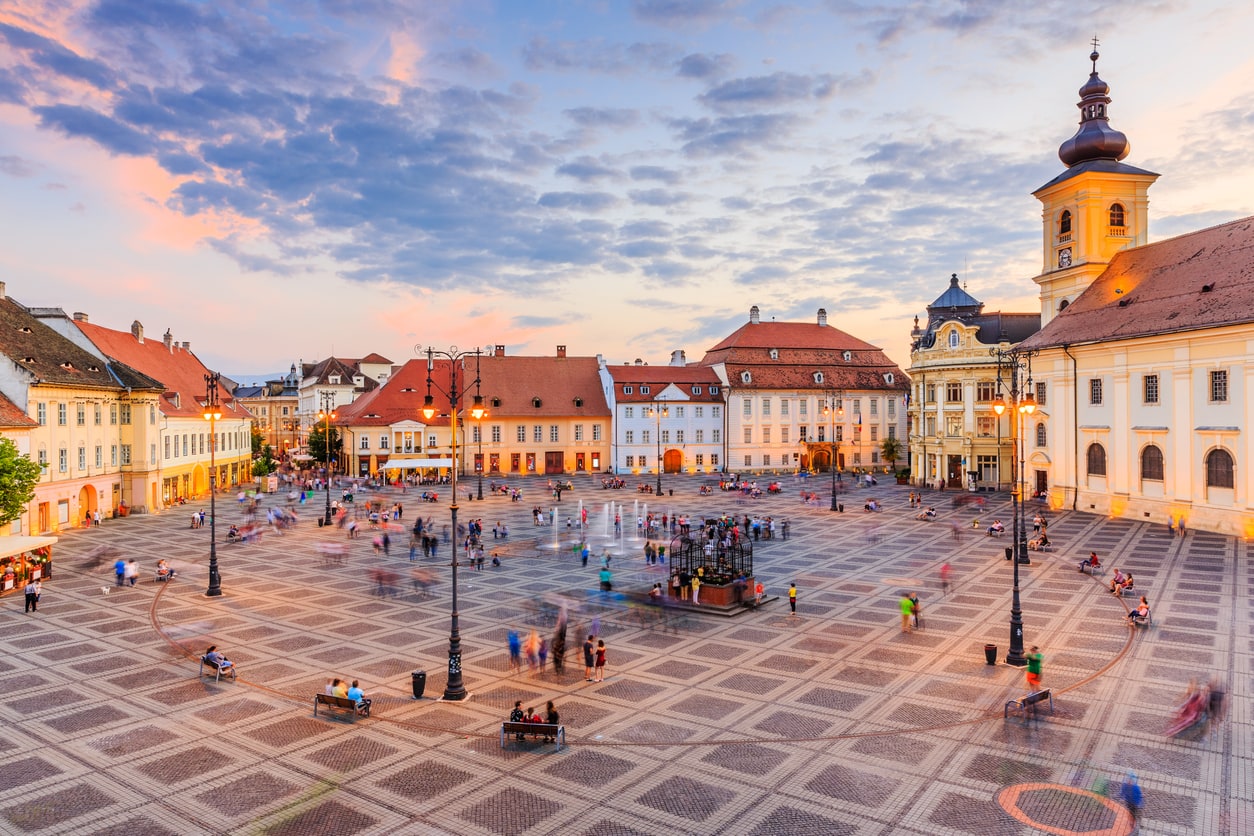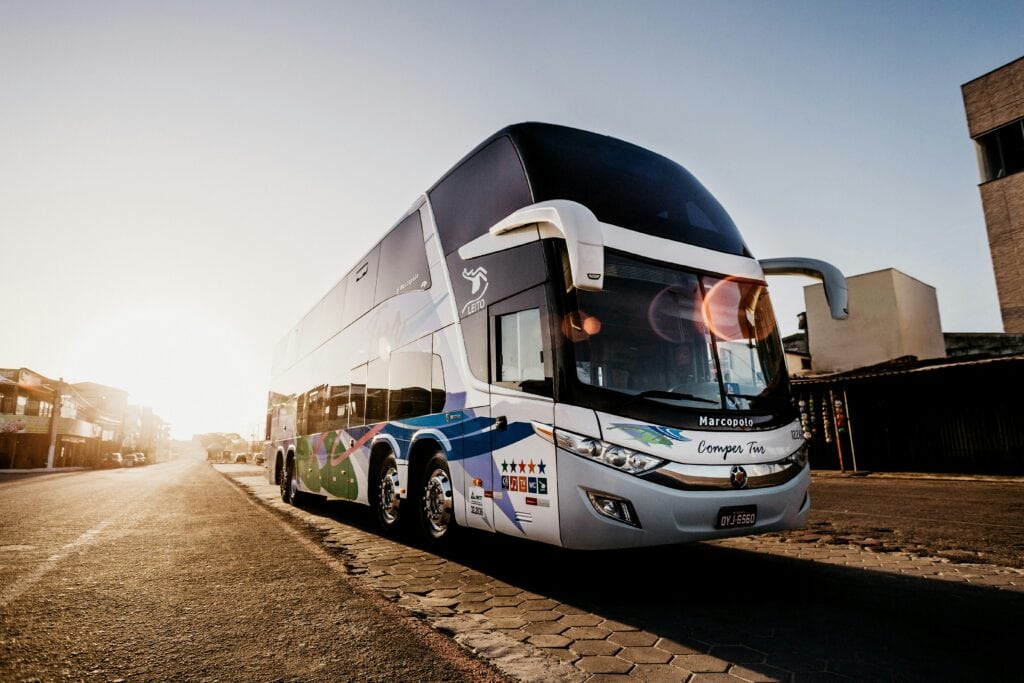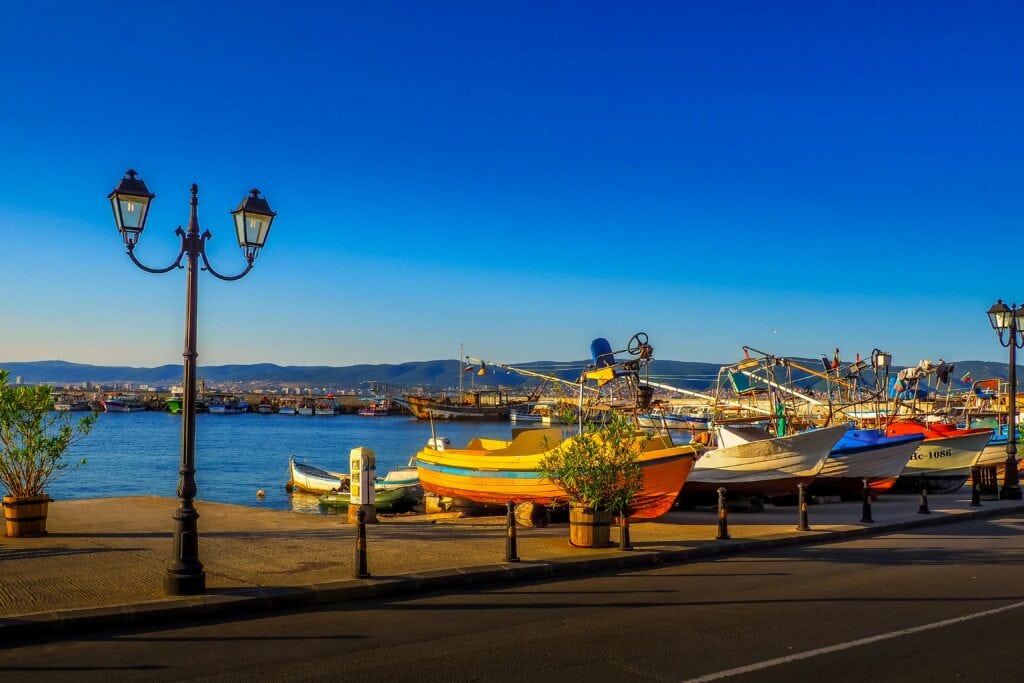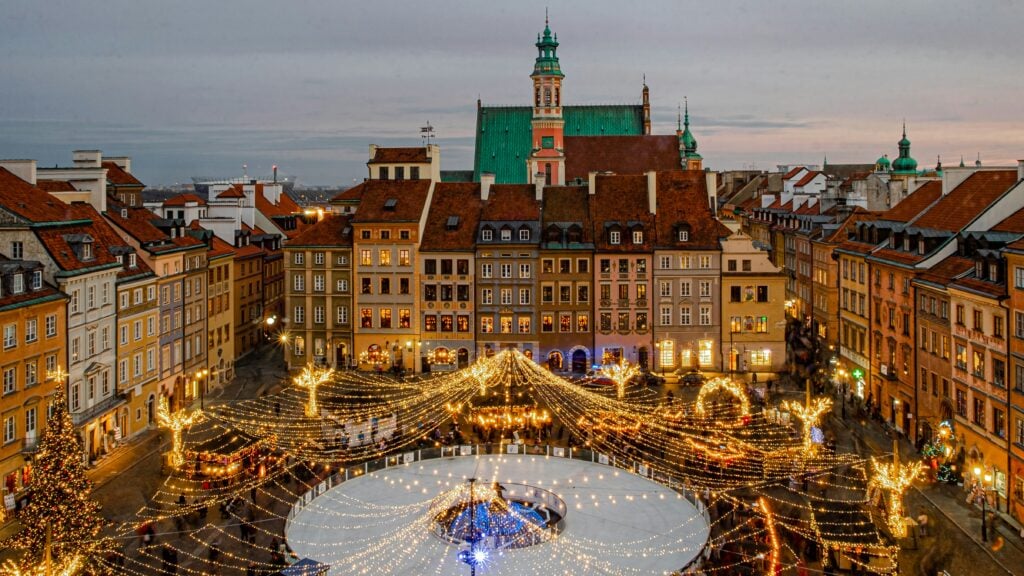Traveling around Europe does not have to break the bank. There are smart ways to explore famous cities, stay comfortable, and enjoy local culture while keeping costs low. By learning how to save on transportation, find budget accommodations, and seek out free or affordable things to do, anyone can have a great adventure in Europe without spending a fortune.
Flexible travel planning, such as traveling during the shoulder seasons or using cheap transport options like Flixbus, can make a big difference for those looking to maximize every euro. Researching insider tips and easy ways to save, such as trying local markets and staying in hostels, helps visitors stretch their budget even more. For detailed guidance, the Europe Budget Travel Guide offers many practical ideas on how to make Europe affordable.
Key Takeaways
- Planning ahead and being flexible helps lower travel costs.
- Smart choices in transportation, food, and lodging can save money.
- Free and low-cost activities add value to a Europe trip.

Essential Planning Tips for Europe on a Budget
Traveling through Europe doesn’t have to be expensive. Careful planning, flexible timing, and smart destination choices can help travelers enjoy memorable experiences without overspending. Below are key strategies for keeping costs down and making the most out of a Europe on a budget adventure.
Setting a Realistic Travel Budget
A clear budget makes planning easier and reduces stress. Start by adding up the total amount available for the trip. List out major expenses: flights, accommodation, food, activities, and transportation within Europe. Remember to include travel insurance and emergency funds.
Use a simple table like this to estimate daily costs:
| Expense | Daily Cost (EUR) | No. of Days | Total (EUR) |
|---|---|---|---|
| Accommodation | 40 | 10 | 400 |
| Food | 20 | 10 | 200 |
| Transportation | 15 | 10 | 150 |
| Attractions | 10 | 10 | 100 |
| Miscellaneous | 10 | 10 | 100 |
| Total | 950 |
Booking hostels, guesthouses, or budget hotels can keep lodging costs low. Many cities also offer free walking tours and inexpensive local restaurants. Tracking spending with a travel app helps avoid running out of money mid-trip. For more ways to set a trip budget, see practical tips on planning Europe travel on a budget.
Best Time to Travel for Savings
The cheapest time to visit Europe is during the shoulder seasons—late spring (April-May) and early fall (September-October). During these months, both flights and accommodations are less expensive compared to peak summer.
Traveling in winter (except for the holiday season) can also offer deep discounts, especially in colder destinations. Popular attractions are less crowded, and some museums offer free entry on select days. Booking flights mid-week is often cheaper than traveling on weekends.
Consider avoiding major holidays or big events like Oktoberfest, as prices for rooms and tickets can skyrocket. Researching flight prices and using alert tools makes it easier to spot deals. Flexibility with travel dates makes a big impact on total costs; more info and tips are available in this comprehensive Europe budget guide.
Choosing Budget-Friendly Destinations
Not all European countries cost the same. Eastern Europe—countries like Poland, Hungary, and Romania—offers great value for travelers, with lower prices for hotels, food, and attractions. Southern Europe, such as Portugal and Greece, is also more affordable than Western countries.
Cities like Prague, Budapest, Lisbon, and Krakow combine historic sites with cheap public transportation and food. Smaller towns and rural areas often mean even better deals and fewer tourists. Consider day trips instead of longer stays in famously expensive cities like Paris or London.
Choose destinations where the euro (or local currency) goes further. The variety in Europe makes it possible to design a fun, affordable itinerary no matter your budget, as explained in many budget Europe travel guides.

Affordable Transportation Strategies
Getting around Europe doesn’t have to be expensive. With advanced planning and the right choices, travelers can stretch their budgets by picking cost-effective transportation methods for both long-distance and local travel.
Finding Cheap Flights and Airlines
Booking flights early and choosing budget airlines is key for saving money on airfare. Travelers should compare deals using flight search tools such as Skyscanner or Google Flights. These platforms show prices across dates and allow easy filtering for the lowest-cost journeys.
Low-cost airlines such as Ryanair, easyJet, and Wizz Air offer flights between major and minor European cities for as little as €10 to €30 if booked several weeks in advance. Flying midweek is usually cheaper than on weekends. Travelers can save more by bringing only carry-on luggage and avoiding extra fees like seat selection.
Consider using smaller regional airports, such as Milan Bergamo instead of Milan Malpensa, to spot even cheaper fares. It’s important to always review the fine print for baggage restrictions and airport transfer costs. For more tips, review these cheap transportation hacks in Europe.
Budget Train and Bus Options
For many trips, trains and buses are practical and affordable alternatives to flying. The Eurail Pass lets tourists visit multiple countries with one ticket, which can be cost-effective on longer journeys. For single trips, booking tickets weeks ahead on national rail sites typically yields “Super Saver” or “Promo” prices.
Buses, like those operated by FlixBus, are often even cheaper than trains for longer routes. FlixBus connects over 30 European countries and can cost as little as €5 to €20 per trip. Overnight buses and night trains help save on hotel costs while getting passengers to their next city.
Ridesharing services, such as BlaBlaCar, help travelers split transportation costs with locals by sharing car rides. Each of these options provides flexibility and value for people researching cheap ways to travel through Europe.
Effective Local Transportation
Once in a city, public transit is almost always cheaper than taxis. Most European cities offer daily or multi-day transit passes for buses, trams, and subways, with prices often ranging from €5 to €15 per day. Many cities also have tourist cards that bundle attractions and transit for additional savings.
For shorter distances, bike-share schemes like Donkey Republic and e-scooter rentals like Lime or Bolt provide affordable and flexible travel. Pedestrian-friendly old towns make walking a free and healthy option. To plan efficient routes, apps like Citymapper or Google Maps show real-time schedules and walking directions, helping visitors navigate with confidence.

Saving on Accommodation and Food
Travelers can make big savings in Europe by picking the right place to stay and making smart choices for meals. Staying in social or self-catering lodging, preparing food themselves, and choosing inexpensive local dishes all help keep costs low.
Hostels, Guesthouses, and Rentals
Hostels are common in most European cities and offer cheap beds, often in shared dorms. Private rooms in hostels or guesthouses cost a bit more but give extra privacy for less than a hotel. Many hostels offer free breakfast or simple meals, which is a great way to save.
Small guesthouses or pensions, found in many towns, give friendly service at affordable prices. Short-term rental platforms like Airbnb or Booking.com apartments can be a budget-friendly choice, especially for groups and longer stays.
Booking directly with smaller hotels or guesthouses might get a better rate, as online listings often have hidden fees. Checking out reviews for cleanliness and safety is important. Some hostels even have social activities or free city tours, making it easy to meet other travelers. Find tips for budget stays across Europe at resources like this Europe budget travel guide.
Choosing Accommodations with Kitchen Facilities
Choosing hostels, guesthouses, or rentals with a shared or private kitchen is a top money-saving strategy. With a kitchen, travelers can buy groceries and prepare simple meals. This helps cut down on eating out, which is expensive in many European cities.
Kitchens are common in apartments and some hostels. Look for properties that list amenities like “kitchenette,” “shared kitchen,” or “self-catering.” In apartment rentals, a full kitchen is usually included but always check the listing details.
Having kitchen access also allows for healthier eating and special dietary needs. Some places offer free coffee, tea, or breakfast basics. These small perks help stretch a travel budget even more. Making coffee or sandwiches before heading out can avoid pricey snacks on the go.
Cheap Eats and Cooking Your Own Meals
Eating cheaply in Europe is possible by seeking out bakeries, supermarkets, and local markets. Many cities have cheap options like sandwich shops, pizza slices, kebab stands, or food trucks. Daily set menus at local cafés, especially at lunch, usually cost much less than dinner.
Buying groceries lets travelers cook their own meals, which is usually the cheapest option. Popular supermarket chains in Europe include Lidl, Aldi, Carrefour, and Tesco. Markets are good for fresh produce, cheese, and bread at low prices.
Quick, simple meals like pasta, salads, and sandwiches are easy to make in hostel or rental kitchens. For a real taste of the region, shop for local products in open-air markets. Cooking a shared meal with other travelers is also a good way to have a low-cost social night. Learn more money-saving food tips from guides like this budget travel in Europe guide.

Maximizing Value with Free and Low-Cost Activities
Travelers can save a lot of money in Europe by planning activities that are free or cost very little. Many cities offer ways to experience local culture, history, and the outdoors without spending much.
Free Walking Tours and Museum Days
Most European capitals and larger towns have free walking tours led by local guides. These tours usually last two to three hours, introducing highlights, hidden spots, and short stories about the city’s history. While the tours are technically free, tipping the guide is expected. This makes for a budget-friendly introduction to new places.
Many museums offer free admission on certain days. For example, in Paris, major museums like the Louvre and Musée d’Orsay have free entry on the first Sunday of the month. London’s public museums, including the British Museum and the National Gallery, are free year-round. Travelers should check museum websites for updated schedules, as free days can change. More ideas and a list of top cities with free cultural attractions can be found in this budget travel guide.
Nature and Outdoor Adventures
Europe’s public parks, national trails, and city gardens are open to everyone and typically free to explore. Parks such as London’s Hyde Park, Barcelona’s Parc de la Ciutadella, and Berlin’s Tiergarten offer places for picnics, walks, and local events. These scenic spots let travelers enjoy local life without paying admission.
Hiking opportunities are everywhere, from city hills to famous locations like the Swiss Alps or the Cinque Terre in Italy. Many trails are well-marked and accessible by public transport. In coastal regions, beaches offer free swimming, sunbathing, and people-watching. Outdoor activities provide a way to enjoy Europe’s natural beauty on a budget.
City Passes and Discount Cards
Most major European cities have tourist passes or discount cards, which cover top attractions, public transport, and sometimes local tours. For example, the Paris Museum Pass gives access to dozens of museums and monuments for a set price. In Amsterdam, the I amsterdam card includes museums, public transit, and canal cruises.
Travelers should compare the price of a pass with the normal ticket prices for the attractions they want to visit. Some cards offer skip-the-line access, which can save time and make the pass more valuable. City passes are best for travelers who are interested in visiting several sights in a short period and want to streamline their spending. For more tips on using city passes, see this complete guide.

Frequently Asked Questions
Travelers often want to save money while exploring Europe. There are practical ways to cut costs by making smart choices for transportation, planning, and destination selection.
What are the cheapest means of transportation for a family traveling in Europe?
Taking buses or coaches is often the most affordable option. Companies like FlixBus and Eurolines offer low fares and frequent routes between major cities.
Trains can also be budget-friendly when booked in advance, with group or family tickets sometimes lowering costs. Overnight trains can save on both travel and hotel expenses. For short trips within cities, public transit is cheaper than taking taxis.
How can one explore Europe on a budget for 10 days?
Travelers can keep costs down by visiting less popular cities that offer lower prices on hotels and food. Staying in hostels, guesthouses, or using platforms like Couchsurfing helps save money.
Look for free city walking tours and local markets for meals. Book transportation in advance, use discount airline sites, and consider buses for intercity travel. Flexible dates make it easier to find deals. Affordable trip planning is discussed in this comprehensive guide to budget travel in Europe.
What is the most cost-effective way to visit Europe from the USA?
The best prices are found by booking flights early and being flexible with travel dates. Budget airlines connecting to Europe, such as Norse Atlantic or French Bee, often have sales.
Flying into less expensive cities, then transferring to your destination using trains or local flights, can lower the overall airfare. Browsing incognito or using a VPN occasionally helps spot cheaper flights, as found in cost-saving Europe travel tips.
What strategies are recommended on Reddit for budget travel in Europe?
Many Reddit users suggest traveling off-season to avoid high prices and crowds. Other common tips include using overnight transport, preparing simple meals from grocery stores, and focusing on free or low-cost local attractions.
Users also recommend regional rail passes and staying outside city centers for cheaper lodging. Active threads often highlight practical ways to manage expenses and how to avoid common tourist traps.
Which European country offers the most affordable tourist experience?
Countries in Eastern Europe, like Poland, Hungary, and Romania, consistently rank as top budget destinations. Prices for food, lodging, and attractions are generally lower than in Western Europe.
Travelers get good value by visiting cities like Budapest, Krakow, and Bucharest. Travelers looking for more ideas can find useful details in this ultimate money-saving guide for Europe.
Can you maintain a daily budget of $100 while traveling in Europe?
It is possible to stay within $100 a day, especially in more affordable regions and by making careful choices about food and accommodation. Shared hostel rooms, local diners, and public transport keep costs low.
Those who plan and book early will have an easier time staying on budget. Eastern European countries allow travelers to stretch their money further while still enjoying popular sights and experiences, as detailed in these budget tips for Europe.
You Might Also Like:
If you enjoyed this post on Budget Travel: How to See Europe on the Cheap, you might also like: See the World on a Budget: Insider Tips and Tricks for Affordable Travel, Best Countries to Visit for Under $1000, Europe Backpacking: How to Have an Epic Adventure
